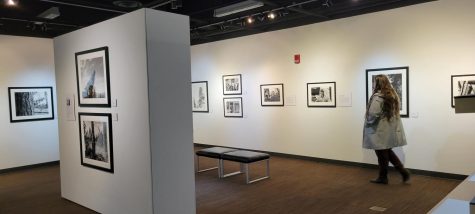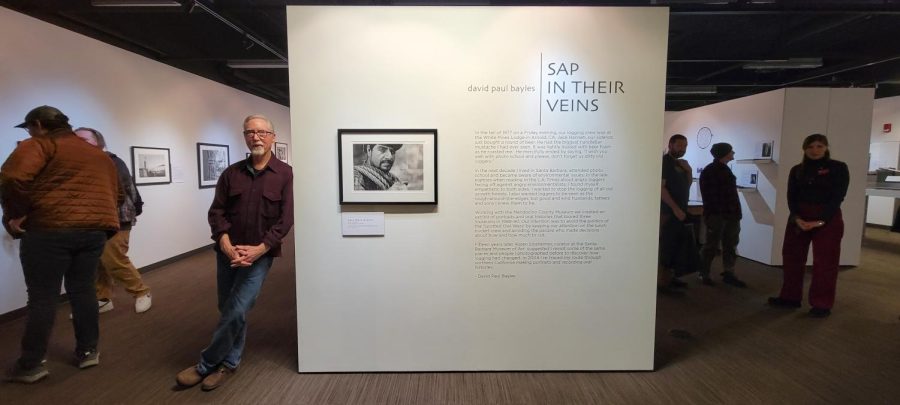Sap in their Veins: stories of logging told by David Bayles
February 1, 2023

Oral History with David Bayles
The Museum of Culture and Environment (MCE) invited photographer David Bayles to showcase his exhibit titled “Sap in their Veins” from Jan. 26 through March 11. Bayles gave a presentation about the impact of his exhibit, where he told the stories of the loggers and trees that comprise this collection.
Amidst a divide between environmentalists and loggers in the 1980s, Bayles set out to shed light on the side that he spent so much time with.
“I created this exhibition with the hope, desire and intention of helping to bridge some of those divides,” Bayles said. “Today, we again live in times of deep, deep divisions, and I believe in the power of stories that reflect our shared humanity to help us see beyond those divides.”
Bayles said he took a job logging with Tom Martin, and there he got to understand the lifestyles of the people who do the manual work of taking trees down.
“Tom paid 50 cents an hour more than anybody else, and so he had the best crew,” Bayles said “They worked the hardest, were the most efficient. We put out 53 loads of logs a day. I love the camaraderie that comes from that kind of danger where you rely on one another to stay safe.”
After logging for 4 years, Bayles said the men on his crew wanted him to continue pursuing his education in photography and told him they hoped he would not forget them..
“I went to school, graduated, and I did kind of forget about them until I started reading about the spotted owl wars in the LA Times and other magazines,” Bayles said. “I realized all this confrontation, and I thought, I have these photographic skills. I think maybe I could do something that might help bridge some of these divides.”
Bayles said he worked with the Mendocino County Museum because they had similar objectives: to work with “the lunch bucket crew.”
“We wanted to leave out the corporate suits and leave out the politics and just tell the stories of the men who had been second, third [and] one time, fifth-generation family loggers. I’ve been a lifelong environmentalist, and I never thought I would be able to feel sympathy for a logger,” Bayles said.”Now, I do.”
Engagement with CWU community
Museum of Culture and Environment Director Hope Amason said the exhibit “deals with issues that we all face every day, whether we are aware of them or not, that pertain to how people interact with the environments around us.”
Amason continued: “[Those issues] divide us ultimately, but we really need to come and sit together and have this conversation because one thing that loggers and environmental groups have in common is a love of trees and of the forest.”
She said “we can’t really have those kinds of conversations until we remember to humanize each other.”
Amason recommended the exhibit for photography and art students who think about composition and capturing the world through a lens.
CWU student Tyler Smith said he felt a connection with the exhibit through his own background.
“I’ve grown up my whole life working on Christmas tree farms, which is nothing like this, but that family’s always done the lumberjack industry and they’re always telling me these types of stories,” Smith said. “It’s so cool seeing the deeper levels of that through somebody else’s eyes.”
Amason said Department of Natural Resources Forest Manager Jason Emsley will be speaking about spotted owls in central Washington on Feb. 16 at 5:30 p.m. in the MCE.
She also said that the Museum Advisory Council (MAC) has open positions for CWU students to provide their input on which exhibits should be displayed in the museum in the future. Any student who is interested can contact her at [email protected] for more information.

